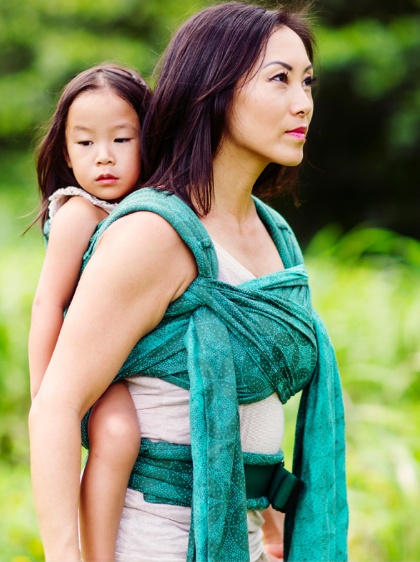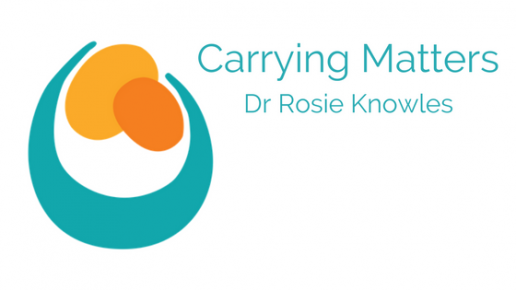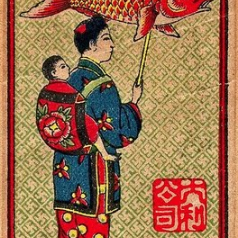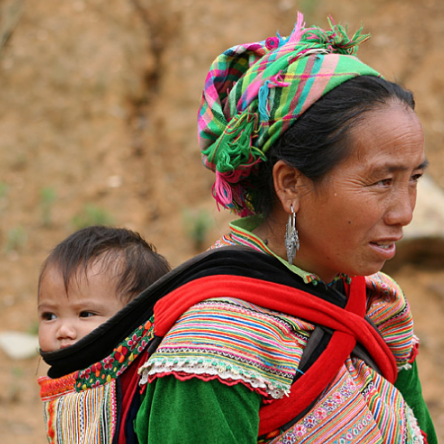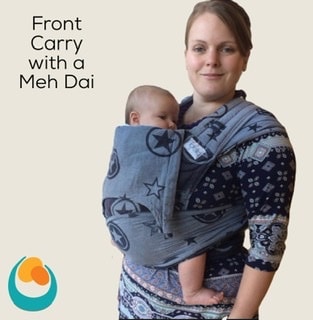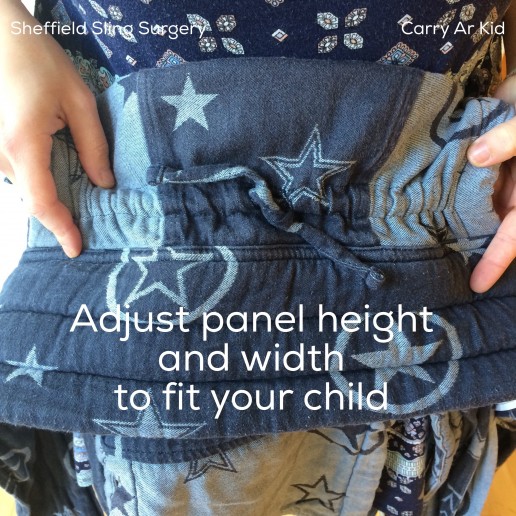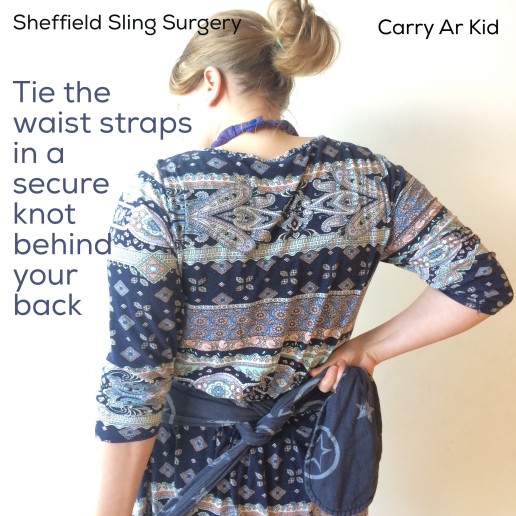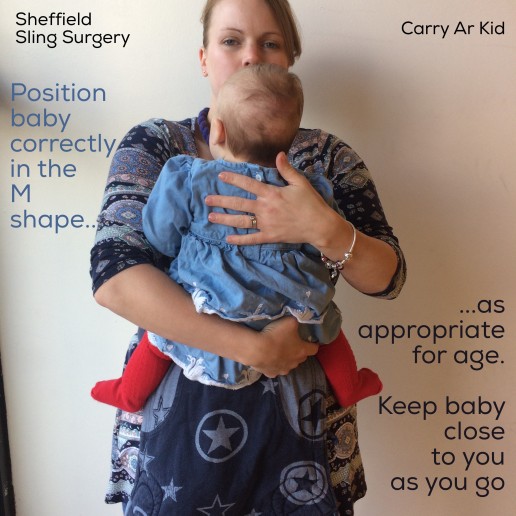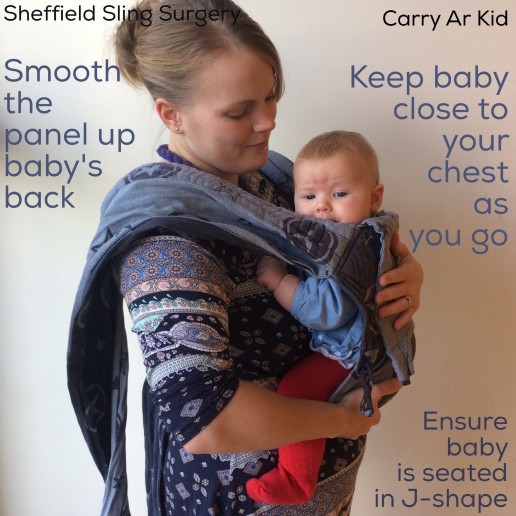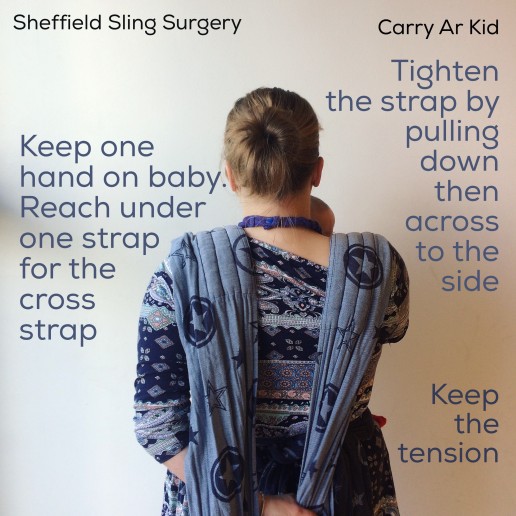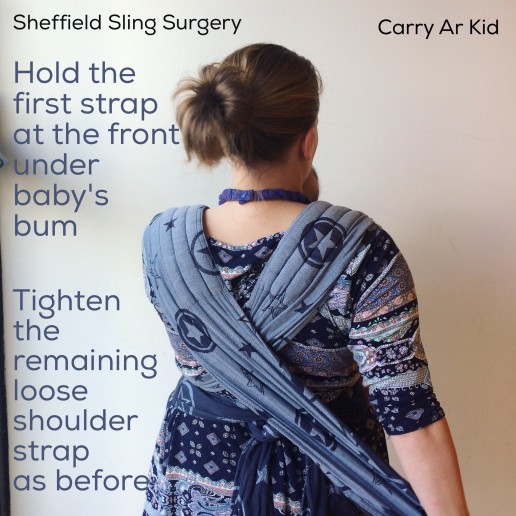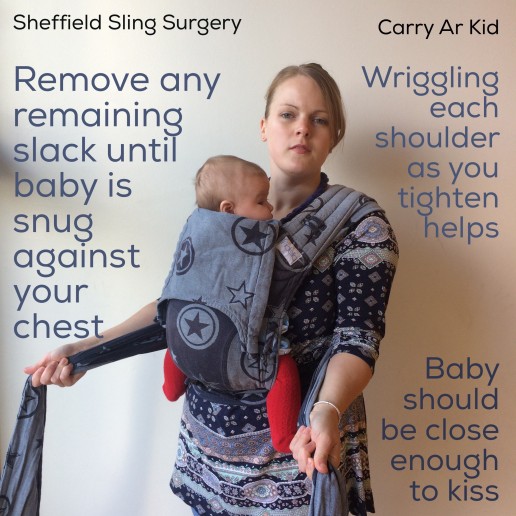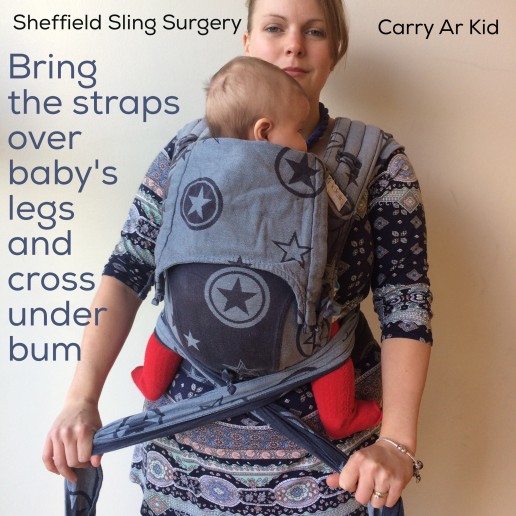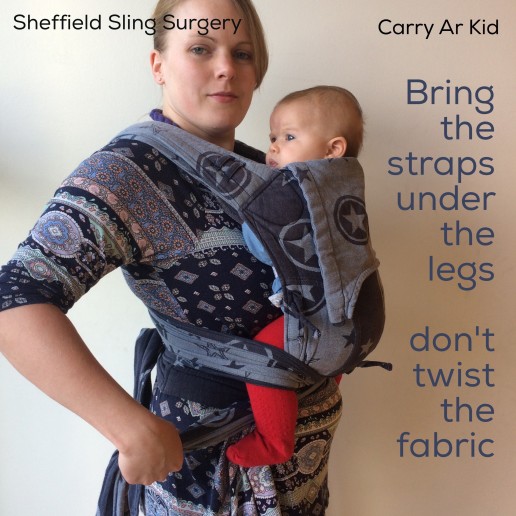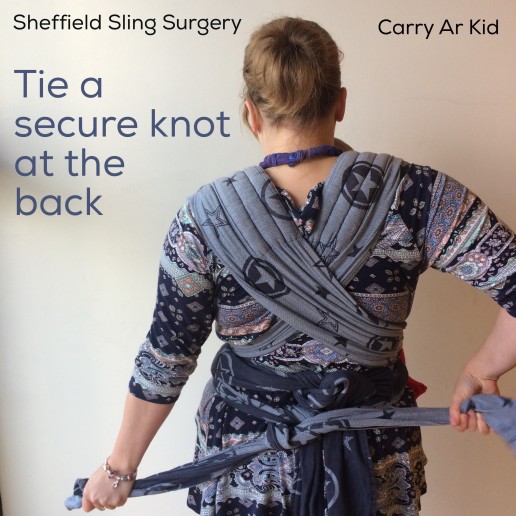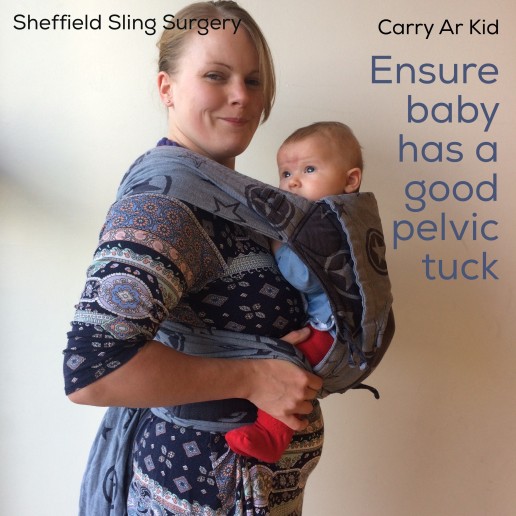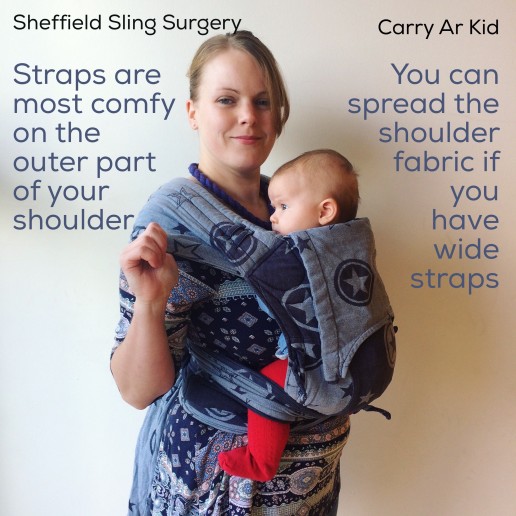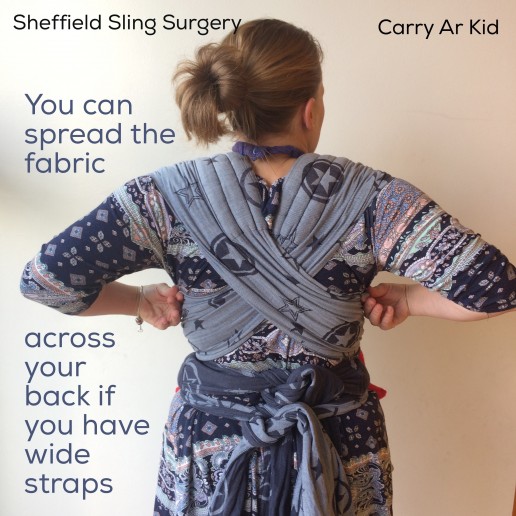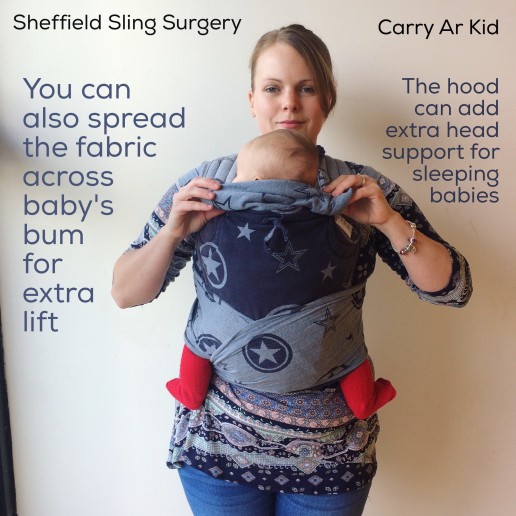Meh Dais/Bei Dais(formerly known as Mei Tais) and their variants are marvellous carriers, often overlooked amidst the huge range of other types. They are among the oldest style of carriers in the world, combining the flexibility of a woven wrap with some of the convenience and simplicity of buckled carriers.
Like all carriers, bei dais and their variants need to be used safely and the TICKS guidelines should always be followed. The most important consideration is to protect baby’s airway; a baby’s neck should never be folded in half and two fingers should fit between their chin and their chest.
The most frequently adopted position for carrying young babies is upright and facing the parent, with legs slightly spread apart (the M position) and head well supported, as this will also protect growing hips and spine. The fabric should be adjusted snugly around baby for the perfect fit.
Bei Dais and other long-strapped carriers can be used for hip or back carries, and some variants (such as the onbuhimo) are designed particularly for back carrying older babies, often with their arms out.
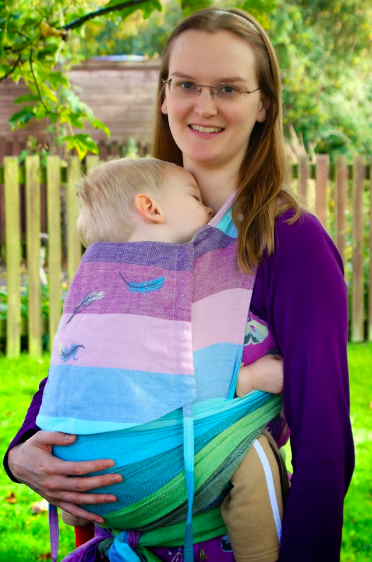
What is a mei dai?
A meh dai (also known as a bei dai, formerly known as mei tai) is the common name given to a type of Asian carrier that originated in China many years ago; consisting of a fabric panel with long straps that are wound around the parent’s body, to be tied or twisted or tucked away securely. The Chinese name for this type of carrier (mispronounced as mei tai) has become eponymous for the style, but different cultures have their own variants of these cloth carriers, which all consist of fabric panels with long straps that are wound around the parent and baby for a secure carry.
These styles of carrier have been made from many different fabrics; from reeds and grasses, to woven cloths covered with beads. Some can be cultural heirlooms with great ritual significance, many are beautifully made; painstaking displays of cultural craftmanship, yet extremely practical for daily life.
They have been the inspiration for many, many Western carriers today. Most modern meh dai and variants are made from cotton or canvas and some are made from woven wraps. including the modern buckled carriers.
What’s so good about meh dais?
In the Western world of babywearing, meh dais are popular with those who appreciate the mouldability and support of woven wraps but prefer something with more structure and definition than a length of fabric. A meh dai consists of a fabric panel that has two straps at the base that are tied (or buckled, in some variants) securely around the waist, and two straps from the top of the panel that can be wrapped around the parent and baby to ensure a snug and comfortable fit. Baby sits in the pouch with legs on either side of the panel, and the long straps allow a great degree of adjustability to all shapes and sizes.
Some people prefer the flexibility of the meh dai to the more structured and fixed shape of full buckle carriers, and with practice, meh dais become very speedy to use. As the straps are wrapped around and knotted, they can be tightened and adjusted to fit around the body exactly, which can be more of a challenge with some buckle carriers which are limited by the placement of buckles or the length of webbing.
Wide straps made from wrap fabric are popular as they can add an extra level of support if needed across the upper and mid back. They can be spread across the wearer’s shoulders and wrapped around baby’s bottom for extra lift and support, as well as creating a wider seat for longer legs. Broad, slightly padded straps are more comfortable than the thinner, narrower straps that are often found on cheaper brands, which don’t distribute the weight as well.
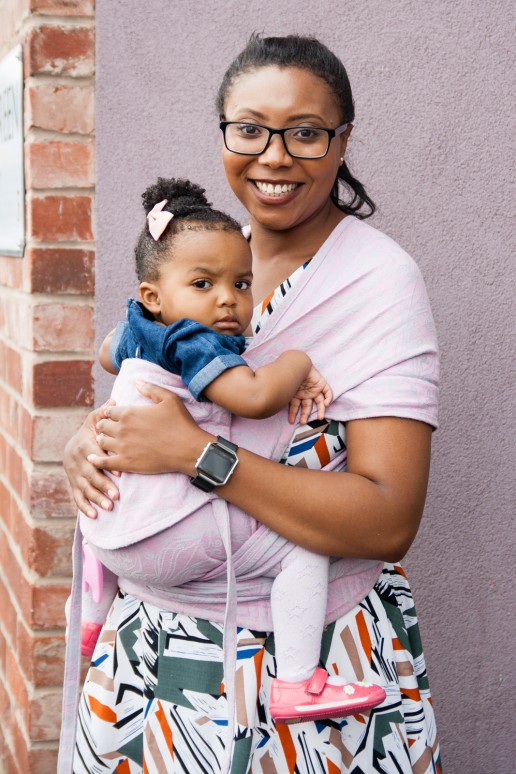
Modern buckled version of the onbuhimo
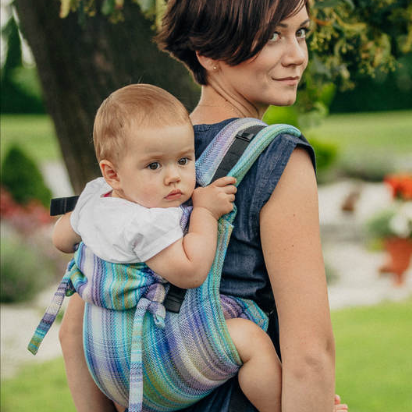
Korean Podaegi used in a Western style
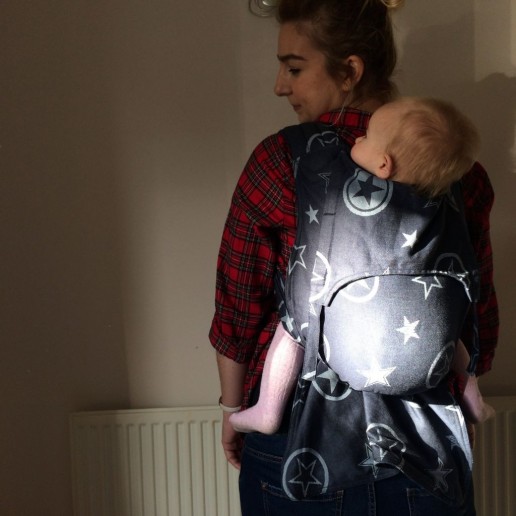
Variations on the Meh Dai
Half buckles are meh dais with buckled waistbands, but long shoulder straps for tying like a meh dai. (The buckle at the waist can be useful if you feel uncertain which knot to untie first to get baby out.) These are popular with people who want the sturdiness of a buckled and padded, yet flexible waistband. They are usually made to order by specialists.
Onbuhimos are the traditional Japanese back carrier, which have metal rings or fabric loops at the waistband for the long straps to be threaded through. Western versions of these have webbing and buckles. They are designed to work especially well for back carries. “Onbu” means to carry on the back, and “himo” means a rope or string; the rope is tied securely around the child’s legs to keep him seated safely. There is no waistband as the carrier is meant to be worn high. This can be useful if your child wants to see the world, or if are pregnant and carrying your toddler!. Read more about onbuhimos here
Korean Podaegis have two straps at the top of a long blanket that is wrapped around baby. The straps are tied around the parent’s body and back around the baby to hold him in place. There is no waistband with this carrier either. Traditional podaegis have the straps tied under arm but most Western carrying with the podaegi is done with the straps coming up over the tops of the shoulders.
South Korean Chunei carriers are similar to jackets fastened around the parent’s body that have a pocket for baby to sit in.
How do I put my meh dai on?
Tie your meh dai around your waist. You may choose to use it “apron” style, where the panel hangs straight down from the edge to the floor. This will create a pouch for baby to sit inside. You may also choose to tie the waistband flat against yourself, so that the panel folds down over the waistband to the floor. Soft waistbands can sometimes be rolled over onto themselves to shorten the overall height of the panel, so that it reaches to the back of baby’s neck (no higher than the earlobe is typical for little ones).
Pick your child up and hold him chest to chest, and position his legs into the seated squat M shape. Put one hand under the panel and smooth the fabric up his back, swapping hands as you go. This will keep him held safely against you.
Smooth the panel around his back and pull up any loose fabric at the knees. Keeping one hand on your baby, put each shoulder strap over your shoulders so they then hang down to the floor vertically behind you. With one hand still on baby, bring your free hand around behind your back to your waist and grasp the strap hanging down from the far (opposite) shoulder. Pull this downwards to tighten over your shoulder, and then bring the strap diagonally across your back and around your side. Pull out any more slack. Bring the strap over your baby’s leg and hold baby and strap with that hand. Repeat on the other side.
With each strap held in front of your baby, wriggle your shoulders and pull out any remaining looseness. Swap the straps over in your hands under baby’s bottom, and then bring each strap under baby’s leg and behind yourself. Tie a secure knot.
Ensure your baby is sitting in the pelvic tuck with bum above knees and that their chest is close to yours with no slumping. If the position isn’t’ right, untie the knot and tighten each strap again.
Spread the shoulder straps out widely to cup your shoulders for extra comfort. You can also spread the straps across baby’s bottom for extra lift.
Your baby’s tummy and chest should be in close contact with your body . If you find it hard to get right, do get in touch for some practical help at a library drop in or a one to one.
Learning how to use a meh dai on the hip or the back does take a little more practice. Some parents find it comes easily and have taught themselves. Others need a few goes to get it right and find a consultation or workshop where they are taught in person helpful.
Front Carry with a Mei Tai
Basic positioning with a mei tai front carry
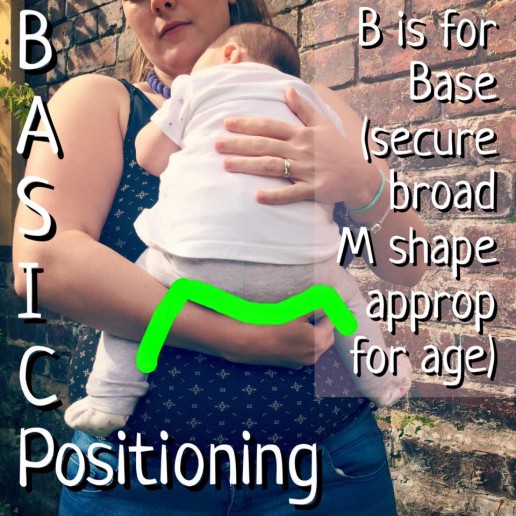
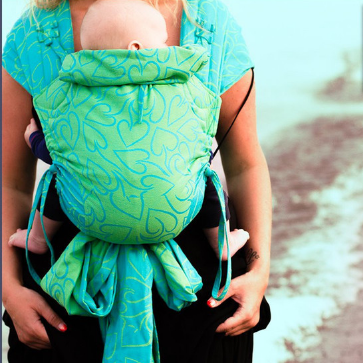
Here is a photo tutorial for a upright meh dai carry with a baby. Please click/swipe through each image.
Here is a separate link to the tutorial.
More videos and tutorials can be found on the useful videos page here.
Wide straps help with comfort for big children
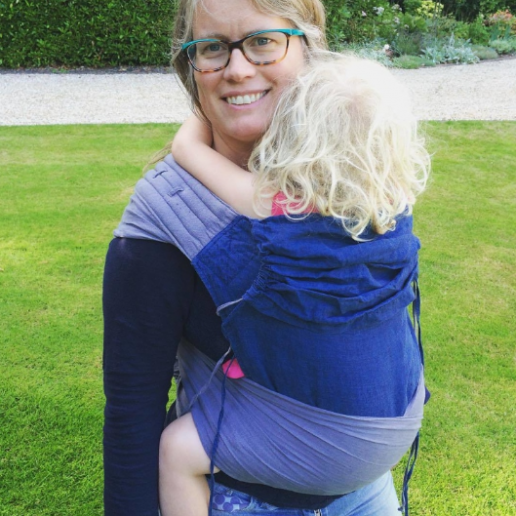
Mei tais can be used by the whole family
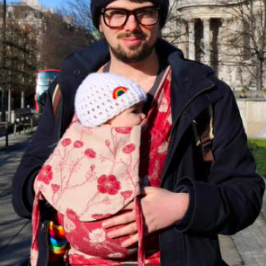
Top Tips!
- Choose how you want to put your waistband on so that the panel is the right height for your baby's back.
- Adjust where possible so the width of the base fits comfortably between your child's seated knee to knee shape.
- Make sure he is sitting in the M shape and hold his chest close to you as you go. Getting position right at the beginning makes it much easier later.
- Smooth the panel up the back and remove any looseness as you go.
- Keep arms in if possible, and bring older babies' arms out later, once the carry is finished. Toddlers may prefer being carried arms out from the start; ensure the panel comes right up under their armpits.
- Wriggle your shoulder as you tighten the strap, this helps remove slack.
- Wrap straps should be tightened in sections for the greatest effect.
- Do not tighten the straps over your baby's knees too tightly and ensure you do the pelvic tilt so baby's weight is resting on their bottom not on their knee pits.
- Spread the fabric across baby's bottom if you can, this will add lift.
Common Queries about Meh Dais
Feeding in Meh Dais and their variants
Feeding is possible in these soft strap carriers, with a little care to ensure baby’s airway is well protected. Typically, for breastfeeding, this involves loosening the panel in stages so baby is lowered gently to the nipple. No breastfeeding is hands free, and it is usually a good idea to get some help and advice from people who are familiar with how to do it. Please note that when baby has finished feeding, he must be returned to his safe snug upright position, close enough to kiss.
You can read more about how to breast and bottle feed here.
Back carry with a mei tai
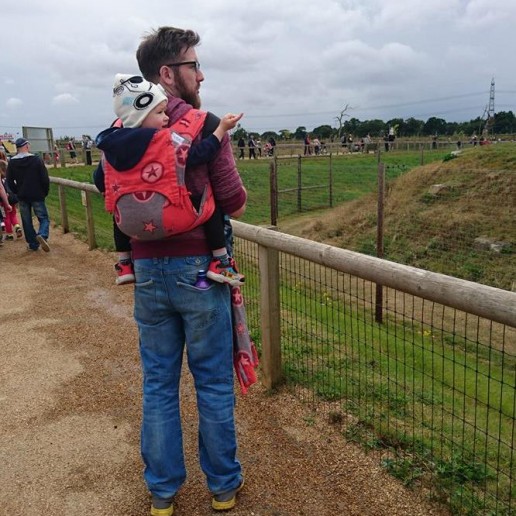
When can I start hip and back carries with a meh dai or similar carrier?
Babies can be carried “off centre” on the front from early on, as long as their natural tucked narrower M shape position is preserved. Lateral hip carries tend to work best when babies begin to sit comfortably the parent’s side, this is typically about 3 months or when baby begins to roll.
It is possible to back carry with a meh dai and a podaegi from a relatively young age, especially with one made with a woven wrap, as the panel and straps are very mouldable to ensure a safe open airway and no slumping.
Onbuhimos are designed primarily for back carrying and many families find this easy to do, they are best with older children. The weight is all taken on the upper body and shoulders which will suit some people better than others.
Back carrying is harder to do than the front and hip carries, seek help if you need it!
Read more here about beginning to back carry.
Troubleshooting your Meh Dai
- Carry feeling too loose or too low? You are likely to have too much slack in the straps that has worked its way to the front. Retighten and retie.
- Struggling to tighten it further? Hold your baby's bottom with one hand to reduce the amount of weight you have to lift as you tighten the strap with the other hand. Pin the tight strap between your knees to help maintain the tension and repeat on the other side.
- Baby folding over or slumping over to one side? This is likely to be looseness in the panel, or the straps too near your neck; leading to an unsupported back. Hold your child chest to chest and retighten the panel around him. Ensure the straps are sitting on the outer part of your shoulders not near your neck. Still not right? Go and see your local sling professional for some extra tweaks.
- Baby's head leaning back? This is usually due to looseness of the top third of the pouch not keeping shoulders and upper body held chest to chest, or not having enough fabric up the back. Lengthen the panel if available and position the straps more widely on your shoulders to bring the top edge of panel flatter and closer.
- Shoulder digging on your neck? Spread the fabric broadly across your shoulder to redistribute weight.
- Red marks at back of baby's neck? This is usually due to over tightening; try a touch looser, but keep baby safe.
- Baby leg straightening? Ensure you have put the crossing straps under the knee pits in the M shape with knees above bottom.
- More videos for other carries can be found clicking here and we can teach you in person too!
Some wrap companies make their own mei tais
